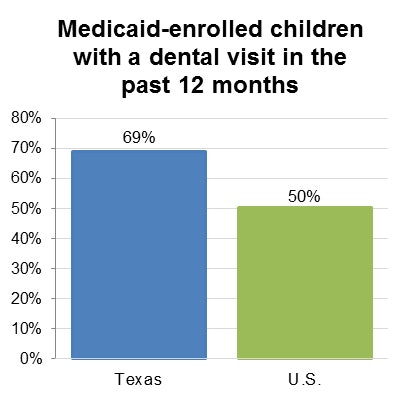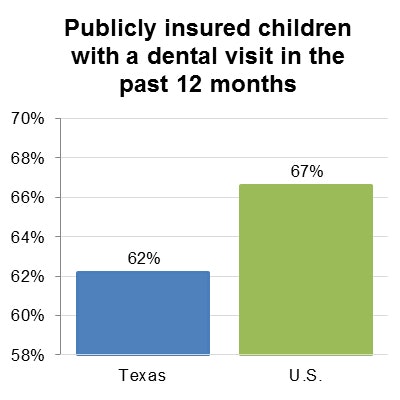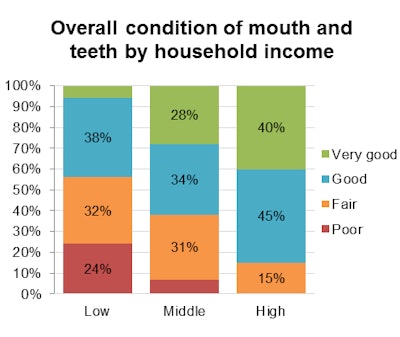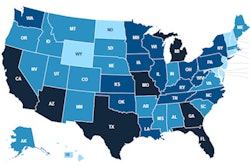
Texas policymakers, researchers, and public health stakeholders met virtually on November 16 to discuss oral health in the Lone Star State. Topics ranged from a record number of kids with public insurance visiting the dentist to a 1993 lawsuit that transformed reimbursement rates.
 Marko Vujicic, PhD. Image courtesy of the ADA.
Marko Vujicic, PhD. Image courtesy of the ADA.The webinar featured state-specific analysis from Marko Vujicic, PhD, chief economist of the ADA Health Policy Institute. During his hour-long presentation, Vujicic detailed how Texas compared with other U.S. states.
"It's always nice to deep dive into a particular state, especially one like Texas that's doing so many innovative things," said Vujicic, who is also vice president of the Health Policy Institute.
So what does oral healthcare look like in Texas? Below are five key takeaways about the state's oral health.
1. Medicaid children are visiting the dentist in record numbers
Texas tops the list of states when it comes to publicly insured kids with a dental visit in the past year. Almost 70% of children enrolled in Medicaid or Children's Health Insurance Program (CHIP) visited a dentist in 2016 in Texas, according to the latest statistics from the U.S. Centers for Medicare and Medicaid Services (CMS). Texas is consistently above average on this metric, Vujicic noted.

"This is really important," he said. "Texas has the highest rate of dental care use among Medicaid-enrolled children, according to the latest [CMS] data."
2. Privately insured kids visit the dentist less often
Texas is one of only two states where children with private insurance visit the dentist less frequently than children with public insurance. In 2015, 62% of privately insured kids in Texas visited the dentist, compared with about 70% of publicly insured kids.

"There are two states, Hawaii and Texas, that have what you would call a reverse gap, meaning that the likelihood of a child visiting the dentist is higher if they're in Medicaid or CHIP than if they have private dental insurance," he explained.
3. Texas does more with less Medicaid providers
In Texas, 48% of dentists have enrolled to be Medicaid or CHIP providers, which is slightly more than the national average of 38%. However, Texas providers also see far more publicly insured kids than the rest of the U.S.
For instance, Texas and Wisconsin have roughly the same number of dental Medicaid providers. But almost 70% of publicly insured kids in Texas see a dentist, compared with about 30% of kids in Wisconsin.
“The state was under a court decree to improve access to care for children with Medicaid.”
Why is there such a big difference? Vujcic suggested that Medicaid-enrolled dentists in Texas could be practicing in high-poverty areas or places closer to the Medicaid population, or that the difference could even be a data error. But a 1993 lawsuit may have more to do with Texas's relative success, according to David Cappelli, DMD, MPH, PhD, the director of the Repository of Oral Health Data Evaluation & Outcomes (ROHDEO).
"The state was sued by an individual [who] had Medicaid benefits for her child, but none of the dentists in her area at that time accepted Medicaid," said Dr. Cappelli, who is also a professor of comprehensive dentistry at the University of Texas at San Antonio School of Dentistry. "So the state was under a court decree to improve access to care for children with Medicaid."
As a result, Texas launched a number of initiatives to improve access to care for publicly insured children, including raising reimbursement rates for physicians and dentists. This transition appears to show up in the Health Policy Institute data, too, Dr. Cappelli noted. For instance, Texas has one of the higher Medicaid reimbursement rates for children, which also appears to translate to higher Medicaid participation, higher dental care use, and lower unmet need.
"There is pretty solid evidence that reimbursement rate increases do translate to higher dental care use," Vujicic said. "Texas is kind of a classic case for that. You went through the whole lawsuit and reimbursement increase period, and that's driven these increases [in dental care use and access]."
4. Adult oral health is harder to measure
While the data for kids are plentiful, the statistics available for adults are not as comprehensive, Vujicic noted. However, the institute's data that are available show that adults' perception of their oral health varies by income level in the state.

"Basically, what you see is a sharp income gradient," Vujicic said. "Meaning that low-income adults in Texas are far, far, far, more likely to report poor oral health ... compared to high-income adults. This is something that we see in most states."
The Health Policy Institute also asked those who did not visit a dentist in the past 12 months why they skipped their annual visit. Cost was by far the leading reason people in Texas didn't visit the dentist, which is also typical for the U.S. as a whole. Not having original teeth was the second most reported reason for skipping a dental visit, followed by trouble finding a dentist who accepts their insurance.
5. More dentists in Texas' future
When it comes to the number of practicing dentists per capita, Texas is slightly below average; however, that is expected to change. The dentist-to-population ratio for Texas increased by 16% from 2005 to 2015, the third highest growth rate out of all 50 states. For comparison, the ratio increased by an average of 5% for the whole U.S.
"I'm pretty comfortable predicting you're going to see a rising supply of dentists in Texas through 2035," Vujicic said. "Even after adjusting for age and gender, which will affect hours, the full-time equivalent numbers are predicted to rise steadily, according to our projections."



















